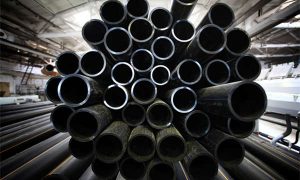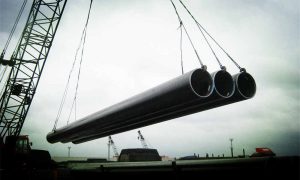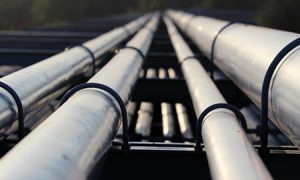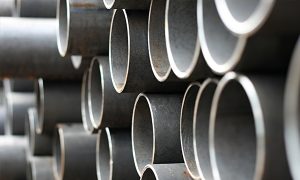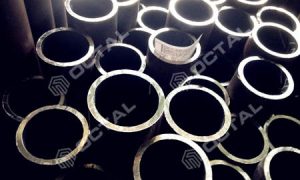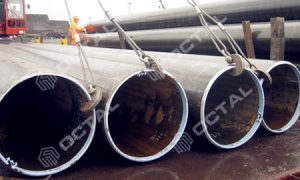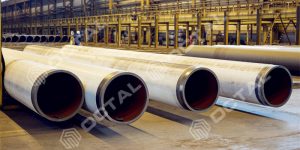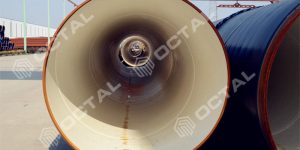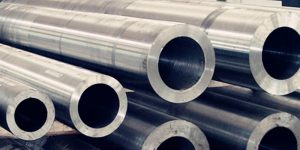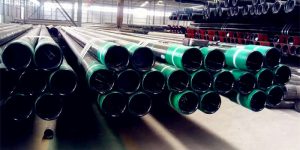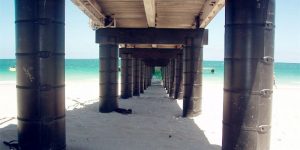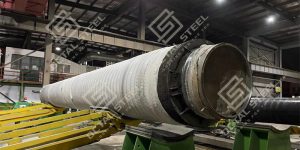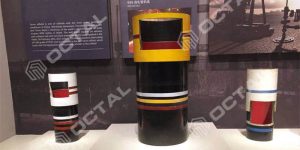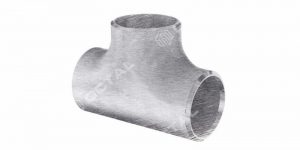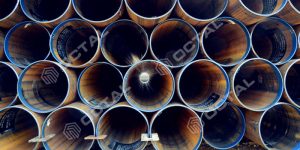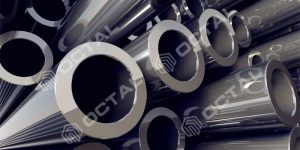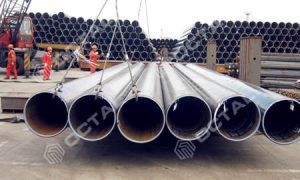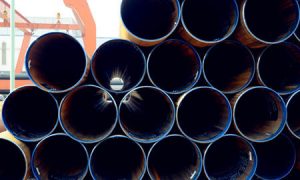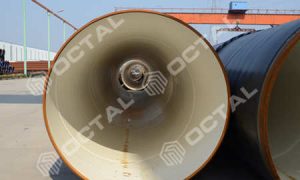LSAW Welded Steel Pipe: Features and Manufacturing Processes
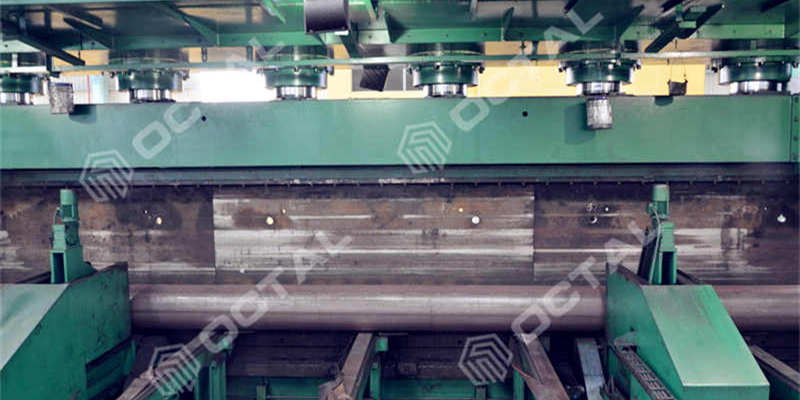
What is LSAW pipe means
LSAW (Longitudinal double submerge arc welding) carbon steel pipe is a type of SAW pipe made of steel plates that were hot rolled by JCOE or UOE forming technology. JCOE technology represents the shaping and forming processes involved during manufacturing as well as the inner and outer welding and cold expansion carried out after welding.
When compared to UOE LSAW steel pipes, LSAW pipe manufacturers in China can produce more sizes as thus: OD 406 mm – 1620 mm, thickness 6.35 mm – 60 mm, pipe length 2 m – 18 m with the LSAW pipe having superiority.
Octal offers LSAW steel pipe with high quality and competitive prices.
LSAW steel pipe features
Features:
-Large diameter steel pipes
-Thick walls
-High-Pressure resistance
-Low-temperature resistance
Tests:
-Chemical Component Analysis
-Mechanical Properties – Elongation, Yield Strength, Ultimate Tensile Strength
-Technical Properties – DWT Test, Impact Test, Blow Test, Flattening Test
-X-ray Test
-Exterior Size Inspection
-Hydrostatic Test
-UT Test
How to use LSAW welded steel pipe for pipelines
The basic metal and welding metal have been tested according to the specification of the pipe API SPEC 5L, DIN, EN, ASTM, GOST standard and other standards.
Also, LSAW pipe can be welded with flanges, lifting eyes and other parts depending on clients’ requirements.
LSAW pipe are used for conveying fluids like oil, gas and water transportation as well as used for seashore projects and ground constructions. These products are manufactured in China and are exported to other countries like United States of America, Canada, India, Pakistan, Africa, etc.
LSAW steel pipe manufacturing process
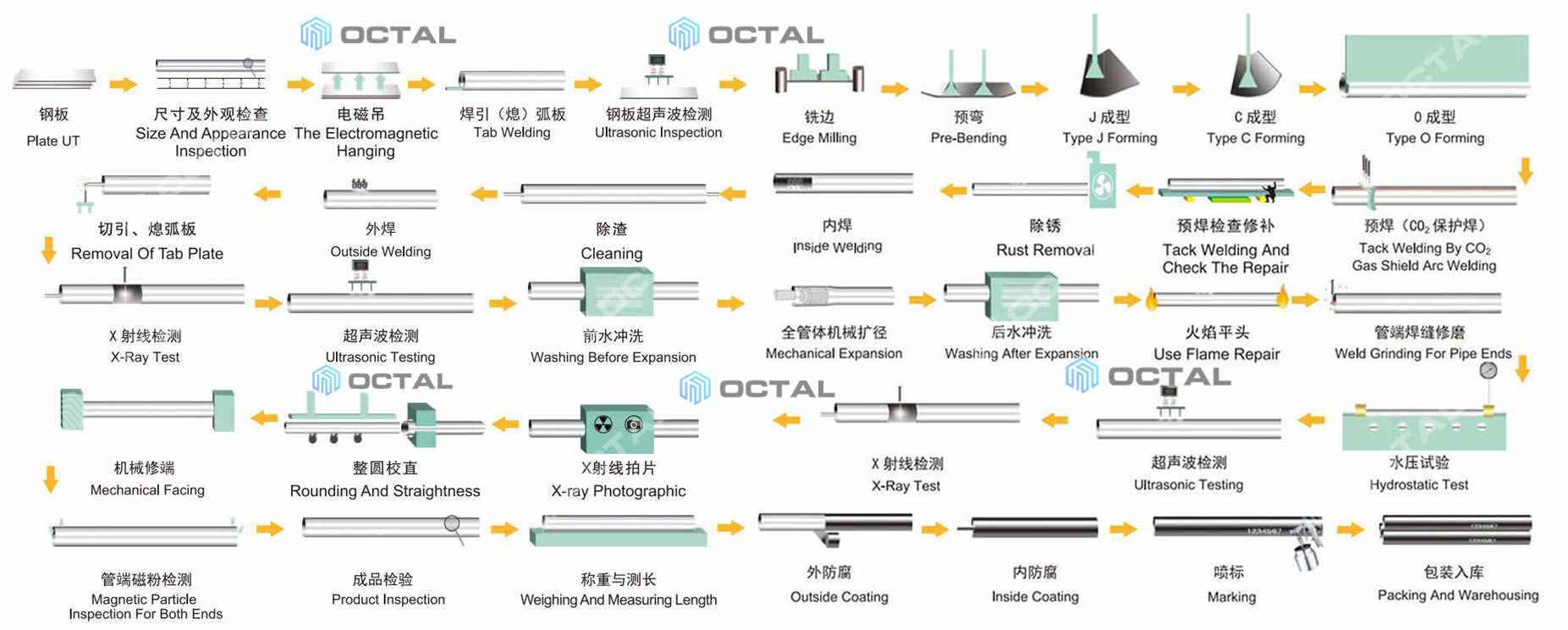
The LSAW large diameter steel pipe manufacturing process is explained in the steps below:
1. Plate Probe: This is used for manufacturing the large diameter LSAW joints right after it enters the production line which is the initial full-board ultrasonic testing.
2. Milling: The machine used for milling does this operation through two-edged milling plate to meet the requirements of the plate width and the sides parallel to the shape and degree.
3. Pre-curved side: This side is achieved by using a pre-bending machine on the pre-bending plate edge. The plate edge needs to meet curvature requirement.
4. Forming: After the pre-bending step, in the first half of the JCO molding machine, after stamped steel, it is pressed into a “J” shape while the on the other half of the same steel plate it is bent and pressed into a “C” shape, then the final opening forms an “O” shape.
5. Pre-welding: This is to make a welded pipe steel a straight seam after it has been formed and then use gas welding seam (MAG) for continuous welding.
6. Inside weld: This is done with a tandem multi-wire submerged arc welding (about four wire) on the inner part of the straight seam welded steel pipe.
7. Outside Weld: Outside weld is the tandem multi-wire submerged arc welding on the outer part of the LSAW steel pipe welding.
8. Ultrasonic Testing: Outside and inside of the straight seam welded steel pipe and both sides of the base material are welded with 100% inspection.
9. X-ray inspection: X-ray industrial TV inspection is carried out on the inside and outside using image processing system to make sure there is detection sensitivity.
10. Expansion: This is for accomplishing submerged arc welding and straight seam steel pipe length hole diameter so as to improve the steel tube’s size precision and improve the distribution of stress in the steel tube.
11. Hydraulic test: This is carried out on the hydraulic test machine for steel after expanding by-root test for ensuring the steel pipe meets the standard requirements with the machine having an automatic recording and storage capabilities.
12. Chamfering: This involves the inspection carried out on the steel pipe at the end of the whole process.







